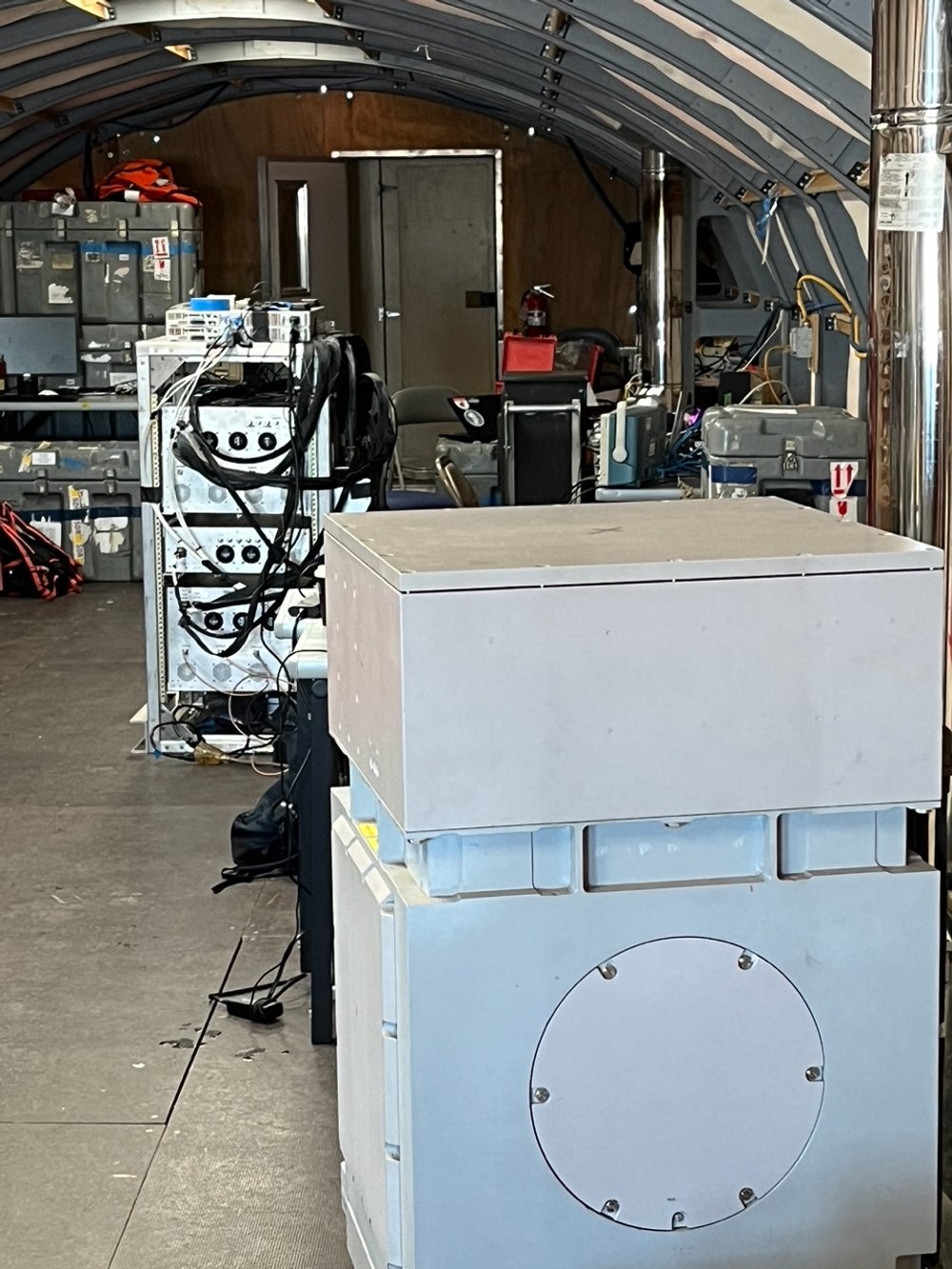Ice Coring Continues at Allan Hills; Airborne Team Ready for Test Flights
Update from I-187 Drilling at Allan Hills: Unfortunately, but with best wishes, the team bid farewell to driller Mike Jayred who reluctantly left the field camp due to an injury. We understand that he will heal up well and know he really would have preferred to stay – he is missed!
Better news from the drill front: the Eclipse drilling in the Cul de Sac begain again, and as of this past weekend the team had reached 73 m. And, the Blue Ice Drill winch controller was repaired. That, and some good weather, allowed the team to set up the BID tent (which is very hard to do in high winds) so BID drilling could now start when the team is ready. Elizabeth Morton is doing heroic work as the remaining driller but we will only be able to drill one core at a time. We are still optimistic that we will be able to collect two ice cores this season, and complete other work, including shallow reconnaissance coring and planned geophysics.
The first ice core retro flight happened yesterday, and we are very thankful for the care the science cargo team and the aircrews take with getting the ice back in the freezer here on station. Asmita Banerjee and I are at McMurdo now and hoping to get to Allan Hills at the end of next week. COLDEX is getting a lot of attention on station and I’ll be giving the Sunday general lecture in the galley this week. Thanks to all of the field team for their hard work! - Update from Ed Brook, Director of COLDEX, at McMurdo Station
Fully assembled Blue Ice Drill tent at Allan Hills, ready for action.
Ed Brook and Asmita Banerjee on Observation (Ob) Hill. The cross was erected in 1913 as a memorial to Scott and the others who died on the way back from South Pole.
Meanwhile, the I-185 COLDEX Airborne team continued their preparations for test flights this week, now with all cargo in hand - including the Kansas UHF radar electronics and UTIG-Transparent Earth Geophysics airborne gravity meter - after some special prioritization by NSF, and able transfer to Williams Field by McMurdo Science Cargo and Fleet Ops. In the mean time, we were able to configure the external science structures of the aircraft. After a spell of strong wind, some digging out was needed, but with the last instruments ready to go on the aircraft this weekend, we expect to be ready for test flights in the Ross Sea region by Monday, and head to the South Pole later that week. COLDEX also participated in the “mini AGU" in the Crary Engineering and Science Center on December 2, presenting some results from last year’s surveys. On December 7, we said goodbye to Dillon Buhl and Brad Schroeder, and said hello to Megan Kerr and Greg Ng, as we prepare to move into the survey portion of the season. - Update from Duncan Young, University of Texas faculty member and Science co-lead for base operations and flight planning for project I-185
Basler MKB with COLDEX flight structures attached, after being dug out due to drifting snow. Mount Erebus is in the background.
Last instruments warm up in Williams Field rack tent.
Foreground: GT-2 gravimeter co-owned by the University of Texas Institute for Geophysics and Transparent Earth Geophysics.
Background: University of Kansas UHF radar electronics rack




